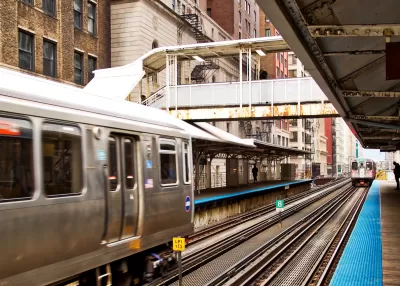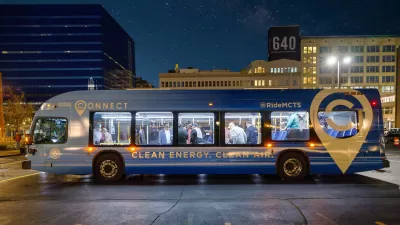A dire warning from regional transit leaders paints a bleak scenario for traffic if agencies are forced to cut service.

Officials from Chicago’s Regional Transportation Authority (RTA) are warning that traffic in the city’s North Side could “grind to a halt” as funding for transit runs out, reports David Struett in the Chicago Sun-Times.
If the state increases spending by 20 percent, the agencies could add 30 to 40 percent more trains and buses, according to a presentation from the RTA. “A bill working its way through the state Legislature seeks to do something like that. The Metropolitan Mobility Authority Act would pump $1.5 billion a year into the area’s public transit, though legislators first want reforms, such as potentially combining the Chicago area’s four agencies into one.”
Without additional state funding, the Chicago Transit Authority, Metra and Pace face a $730 million debt after 2026, forcing service cuts that could almost double travel times in some areas. If the agencies are forced to cut service, “The Chicago area could see a $2.6 billion loss in gross domestic product, largely driven by about 27,000 jobs that are lost in the first year.” A study from the U.S. Department of Energy’s Argonne National Laboratory and MIT found that service cuts could result in a loss of roughly $35 billion in economic activity annually.
The RTA wants state legislators to give it more control over the other three agencies, arguing that “The changes could bring more federal money to Chicago-area transit projects, since federal grants increasingly want to see ‘regional vision and coordination in projects.’” The agencies largely oppose a proposal to consolidate them into one regional agency.
FULL STORY: Traffic may 'grind to a halt' after transit COVID-19 grants run out, RTA warns

Alabama: Trump Terminates Settlements for Black Communities Harmed By Raw Sewage
Trump deemed the landmark civil rights agreement “illegal DEI and environmental justice policy.”

Planetizen Federal Action Tracker
A weekly monitor of how Trump’s orders and actions are impacting planners and planning in America.

Why Should We Subsidize Public Transportation?
Many public transit agencies face financial stress due to rising costs, declining fare revenue, and declining subsidies. Transit advocates must provide a strong business case for increasing public transit funding.

Understanding Road Diets
An explainer from Momentum highlights the advantages of reducing vehicle lanes in favor of more bike, transit, and pedestrian infrastructure.

New California Law Regulates Warehouse Pollution
A new law tightens building and emissions regulations for large distribution warehouses to mitigate air pollution and traffic in surrounding communities.

Phoenix Announces Opening Date for Light Rail Extension
The South Central extension will connect South Phoenix to downtown and other major hubs starting on June 7.
Urban Design for Planners 1: Software Tools
This six-course series explores essential urban design concepts using open source software and equips planners with the tools they need to participate fully in the urban design process.
Planning for Universal Design
Learn the tools for implementing Universal Design in planning regulations.
Caltrans
Smith Gee Studio
Institute for Housing and Urban Development Studies (IHS)
City of Grandview
Harvard GSD Executive Education
Toledo-Lucas County Plan Commissions
Salt Lake City
NYU Wagner Graduate School of Public Service





























